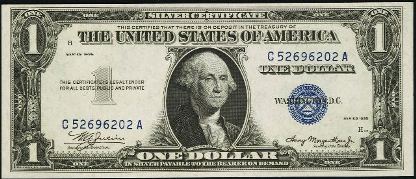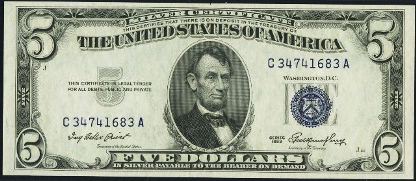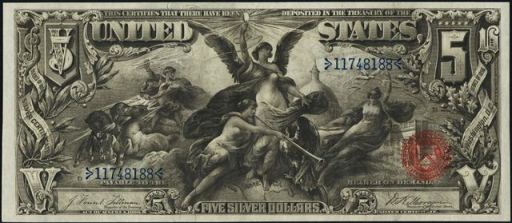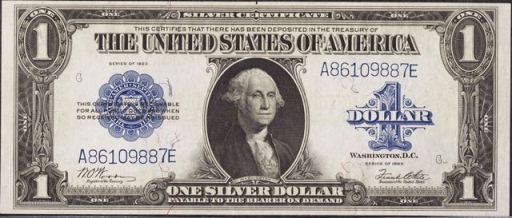Silver Certificate Values
When most people talk about silver certificates they probably think back to $1 1957 silver certificates. However, the United States started issuing silver certificates as early as 1878. Silver certificate has kind of taken on a term to describe any old U.S. bill. Of course only some notes actually are silver certificates. Click on your denomination below to learn more about that note.
$1 – $2 – $5 – $10 – $20 – $50 – $100 – $500 – $1000



Large size silver certificates were first printed in 1878. Any note from 1878 or 1880 should considered to be scarce. The next line of silver certificates were issued in 1886. These are available, but you still don’t see them especially frequently.
1891, 1896, and 1899 silver certificates were printed in large numbers. For the most part, 1891 notes look similar to earlier issues. However, the 1896 and 1899 types are distinctive. The 1896 series is famously known as the educational series. The 1899 line of silver certificates present opportunities to own a black eagle, mini-porthole, or a chief.

Oddly enough, the 20th century saw the issuance of large size silver certificates in just two years, 1908 and 1923. The 1908 example is a fairly tough $10 note. One and five dollar bills were printed for 1923. The $1 bill is exceptionally common and worth around $15 on average. The $5 bill from 1923 is fairly tough, and usually worth at least a few hundred dollars.
I would be happy to help answer any questions you might have about your silver certificate. I am also interested in buying different, rare, or high grade notes of any denomination and type. Sales@AntiqueMoney.com


